Text
Animals Sleep Habits - Do flies sleep ?

Welcome to the fascinating world of animal sleep! Have you ever wondered how different animals sleep? From the brief naps of insects to the long slumber of mammals, the way animals sleep is as diverse as the animals themselves.

But before we delve into the unique sleeping habits of different species, let's put your knowledge to the test. Do you think all animals sleep? Do you know which animals sleep the most? And can you name at least one animal with an unusual sleeping habit?
If you're stumped, don't worry - we'll reveal the answers in this blog post. We'll also explore the top 10 animals with the most unusual sleeping habits, and discover why sleep is so important for animals. So, are you ready to learn about the wild world of animal sleep?
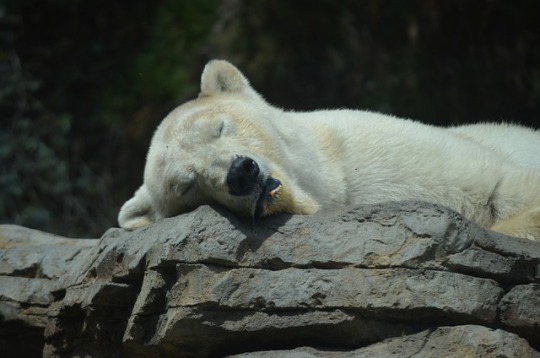
Sleep is a vital part of an animal's life, but the way different species sleep can vary greatly. From mammals to insects, each animal has its own unique sleeping habits.
Do flies sleep?
One interesting example is the fly. Despite their tiny size, flies do indeed sleep. However, their sleep patterns are vastly different from those of mammals. Flies only sleep for short periods, typically less than one minute at a time, and they often sleep while flying. This is known as unihemispheric slow-wave sleep, where one half of the brain sleeps while the other half remains active, allowing the fly to continue flying and avoid predators.
Which animals sleep the most?
When it comes to the animals that sleep the most, the list is topped by mammals. Bats lead the pack, sleeping for up to 19 hours a day. Closely following are opossums and armadillos, who sleep for around 18 hours a day. Humans, on the other hand, typically sleep for about 8 hours a day.
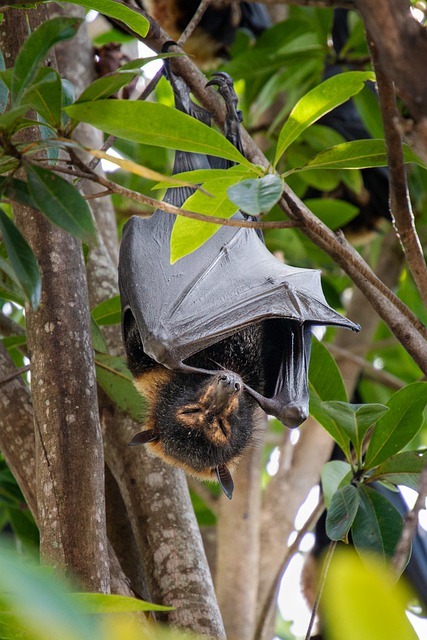
Here is a list of the top 10 animals that sleep the most:
https://sensationaltech.com/culture/animals-sleep-habits-do-flies-sleep/
Read the full article
0 notes
Text
The Future is Now: Exciting Automotive Developments from CES 2023

Get ready to experience the future of transportation with the exciting debuts from CES 2023.
https://www.youtube.com/watch?v=r87DU8g9Je8
BMW stole the show with their constantly changing, AI-powered color changing car. But that's not all - the Attitude also comes with a very human-like personality. And if that wasn't enough, the car also boasts a head up display stretching from pillar to pillar, capable of taking over the entire windshield.

Drivers can switch between a simple display for driving and an augmented or even virtual reality display for self-driving situations. While the Attitude may not make it into production, you can expect to see a toned-down version in BMW's Next Generation electrified vehicles as early as 2025.
But BMW wasn't the only one making waves at the conference. Ram Trucks' electric pickup truck, the Bev, made a strong entrance into the race with its striking exterior design made possible by a Stella frame Next Generation platform.

The batteries are stored in the frame and the dual electric motors are pushed to the extremes, allowing for an extra four inches of cabin length. The cabin itself is extremely flexible, with seats and a console that slide and swivel, as well as a dual display dashboard with a removable lower screen. The Bev even has a power midgate that can be lowered to create a path through to the front, opening up 18 feet of enclosed cargo space. Production versions of the Bev are set to release later this year with an expected launch in 2024.
Peugeot's Inception electric coupe had everyone talking with its gorgeous exterior and airy cabin. The deeply raked windshield and aerodynamic grill caught our attention, as did the claw scratch-inspired non-radio wheel design.

But the real showstopper was Peugeot's new hyper Square steering concept - a steer-by-wire square wheel with four inset rings that drivers can use to control various elements of the vehicle's performance.

Conceived with autonomy in mind, the hyper Square can be tucked away when the Inception is driving itself, freeing up space in the spacious, flexible cabin for passengers to relax.
And that's not all - Sony made a surprise entry into the electric car market with their concept sedan, featuring a full-width visor and a minimalist body.

The dashboard has evolved since Sony's previous CES concepts, the Vision S and Vision S SUV, and the electric sedan is packed with technology, including a holographic display, gesture control, and advanced autonomous driving capabilities.
The Byton M-Byte, an all-electric SUV with a massive 48-inch dashboard display, was another standout at the conference.

The car boasts a sleek design and advanced technology, including facial recognition, personalized profiles, and a range of over 250 miles.
Last but not least, the GAC Aion S made a splash with its fully autonomous capabilities and impressive range of over 300 miles.

The electric vehicle boasts a spacious interior and advanced connectivity features.
With so many exciting developments on the horizon, the future of transportation is looking brighter than ever. Keep an eye out for these game-changing designs hitting the market in the coming years.
Read the full article
0 notes
Text
Galilean moons

The Galilean moons are a group of four moons that orbit the planet Jupiter. They are called the Galilean moons because they were discovered by the Italian scientist Galileo Galilei in 1610 using a telescope. The four moons are named Io, Europa, Ganymede, and Callisto.
Io is the innermost of the Galilean moons and is also the most volcanically active body in the solar system. It is covered in lava flows and has over 400 active volcanoes. The surface of Io is constantly being reshaped by the volcanic activity, which has created mountains and plains.
Europa is the second of the Galilean moons and is thought to have a subsurface ocean of liquid water beneath its icy surface. This ocean may be a good place to search for life, as it may contain the necessary ingredients for life to evolve. Europa is also home to a number of geological features, including cracks and ridges on its surface.
Ganymede is the largest of the Galilean moons and is also the largest moon in the solar system. It is larger than the planet Mercury and has a surface that is made up of a mix of ice and rock. Ganymede has a number of large impact craters and a number of smooth, dark regions that are thought to be made up of water ice.
Callisto is the outermost of the Galilean moons and is the third largest moon in the solar system. It has a heavily cratered surface that is thought to be the oldest surface in the solar system. Callisto is also thought to have a subsurface ocean of liquid water, similar to Europa.
The Galilean moons are an important part of our solar system and have provided scientists with a wealth of information about the early solar system and the processes that shaped the planets and moons. They are also of great interest to scientists who are searching for signs of life beyond Earth.
Read the full article
0 notes
Text
Gravity Jet Suits: A Revolutionary Technology for Personal Flight

In recent years, jet suits have gained popularity as a revolutionary technology for personal flight. These suits use jet propulsion to lift the wearer off the ground and allow them to fly through the air. The technology behind jet suits, also known as "gravity jet suits," is a combination of aerospace engineering and human-centered design.
https://youtube.com/shorts/IjKHyLX5Zd0?feature=share
How Do Gravity Jet Suits Work?
Gravity jet suits consist of a series of small jet engines mounted on a rigid exoskeleton worn by the user. The jets are controlled by the user through a handheld throttle and are powered by a backpack containing a fuel tank. The jets generate enough thrust to lift the user off the ground and allow them to fly through the air at speeds of up to 60 mph.
The exoskeleton of a gravity jet suit is designed to be lightweight and ergonomic, allowing the user to move freely and comfortably while wearing the suit. The suit also includes a helmet with a built-in heads-up display (HUD) that displays important information such as altitude, speed, and fuel levels.
Applications of Gravity Jet Suits
Gravity jet suits have a wide range of potential applications, including search and rescue operations, firefighting, military operations, and entertainment.
One of the most promising applications of jet suits is in search and rescue operations. In the event of a natural disaster or other emergency, jet suits could be used to quickly reach and rescue people in hard-to-access areas. Jet suits are also being explored for use in firefighting, as they could allow firefighters to quickly reach and extinguish fires in hard-to-access areas.
Gravity jet suits have also attracted interest from the military, as they could be used for a variety of missions such as reconnaissance, surveillance, and transportation. In addition, jet suits have the potential to revolutionize the entertainment industry, providing a unique and exciting experience for thrill-seekers.
Gravity jet suits are a promising technology that has the potential to revolutionize personal flight and change the way we think about transportation. While still in the early stages of development, jet suits have already demonstrated their potential in a variety of applications, and it will be interesting to see how they continue to evolve in the future.
Read the full article
0 notes
Text
Secrets of the Moon: Moon Phases, Blue Moons, Blood Moons and Pink Moons
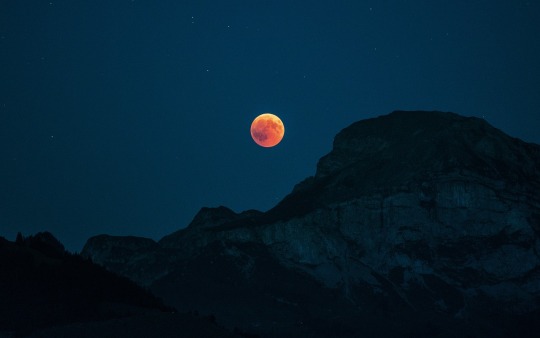
The Moon is Earth's only natural satellite and it orbits around our planet about once every 27.3 days. As the Moon orbits the Earth, it appears to go through a cycle of phases, each of which is associated with a specific shape of the Moon as seen from Earth. These phases are caused by the changing position of the Moon relative to the Sun and Earth as it travels in its orbit.
Phases of the Moon
There are eight main phases of the Moon, and they are typically referred to by their traditional names: New Moon, Waxing Crescent, First Quarter, Waxing Gibbous, Full Moon, Waning Gibbous, Third Quarter, and Waning Crescent. These phases are not evenly spaced out over the course of a month, as the time it takes for the Moon to orbit the Earth is not an even number of days. Instead, the phase of the Moon changes each day as the Moon moves around in its orbit.
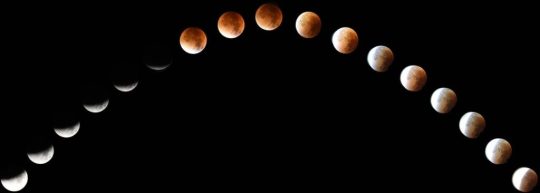
New Moon: The Moon is not visible from Earth during the New Moon phase, as it is positioned between the Sun and Earth and the side of the Moon facing the Sun is fully illuminated. This phase marks the beginning of a new lunar month.
Waxing Crescent: As the Moon continues to orbit the Earth, the side facing the Earth becomes increasingly illuminated, and the Moon appears as a thin crescent in the sky. This phase is called the Waxing Crescent phase.
First Quarter: Half of the illuminated side of the Moon is visible from Earth during the First Quarter phase. This phase occurs about one week after the New Moon.
Waxing Gibbous: As the Moon continues to orbit the Earth, more and more of the illuminated side becomes visible, and the Moon appears as a larger crescent in the sky. This phase is called the Waxing Gibbous phase.
Full Moon: The Full Moon phase occurs when the entire illuminated side of the Moon is visible from Earth. This phase occurs about two weeks after the New Moon.
Waning Gibbous: After the Full Moon, the illuminated side of the Moon begins to shrink as the Moon moves further away from the Sun. The Moon appears as a large, waning crescent in the sky during the Waning Gibbous phase.
Third Quarter: Half of the illuminated side of the Moon is visible from Earth during the Third Quarter phase. This phase occurs about three weeks after the New Moon.
Waning Crescent: As the Moon continues to orbit the Earth, even less of the illuminated side becomes visible, and the Moon appears as a thin, waning crescent in the sky. This phase is called the Waning Crescent phase.
Blue Moon
A blue moon is not actually blue in color, but rather it refers to the occurrence of an additional full moon within a single calendar month. This phenomenon occurs about once every 2.7 years, on average, and it is caused by the fact that the lunar month (the time it takes for the Moon to orbit the Earth) is slightly shorter than the calendar month.
Technically, a blue moon can occur in any month, but it is most commonly used to refer to the second full moon in a calendar month. The first full moon of the month is known as a "calendar blue moon," while the third full moon in a season with four full moons is known as a "seasonal blue moon."
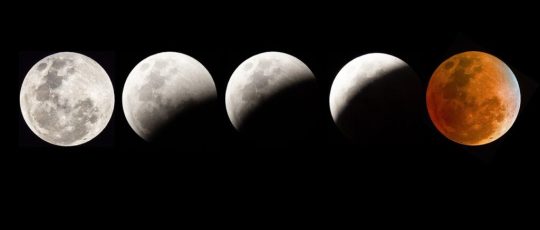
Blood Moons
A blood moon is a nickname for a total lunar eclipse, which occurs when the Earth passes directly between the Sun and the Moon, blocking the sunlight from reaching the Moon. During a total lunar eclipse, the Moon appears to be reddish in color, which is why it is often referred to as a "blood moon."
There are several factors that contribute to the reddish color of the Moon during a total lunar eclipse. The Earth's atmosphere scatters sunlight, and red light is scattered less than other colors. As a result, when the Earth blocks the sunlight from reaching the Moon, the only light that is able to reach the Moon is red light that has been scattered by the Earth's atmosphere. This red light is then reflected by the Moon, giving it a reddish color.
The duration of a total lunar eclipse can vary, but they typically last for several hours. Total lunar eclipses are relatively rare events, and they can be seen from anywhere on the night side of the Earth.
Pink Moons
A pink moon is not actually pink in color, but rather it is a nickname for the full moon that occurs in April. This name is derived from the Native American Algonquin tribe, who named the full moons of each month to mark the changing seasons. The pink moon got its name from the pink flowers that bloom in the spring, such as wild ground phlox and moss pink.
It is worth noting that the full moon in April is not always pink in color. The color of the Moon is determined by the amount of dust and other particles in the Earth's atmosphere, which can vary from month to month. When there are more particles in the atmosphere, the Moon can appear red, orange, or yellow in color. When there are fewer particles in the atmosphere, the Moon can appear white or blue in color.
In summary, moon phases are the different shapes of the Moon as seen from Earth, which are caused by the changing position of the Moon relative to the Sun and Earth as it orbits around our planet. A blue moon is an additional full moon within a single calendar month, while a blood moon is a nickname for a total lunar eclipse, during which the Moon appears reddish in color. A pink moon is the full moon that occurs in April, and it gets its name from the pink flowers that bloom in the spring.
Read the full article
0 notes
Text
The Science of Weather Forecasting: How Meteorologists Predict the Future
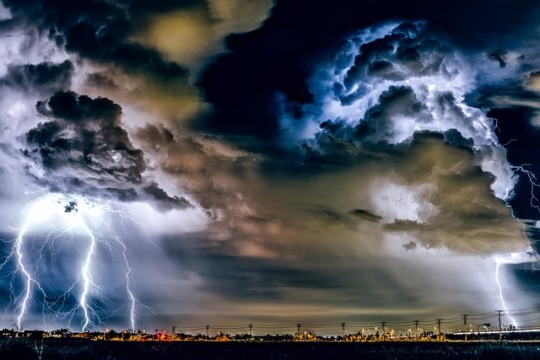
Weather forecasting is a crucial aspect of modern life, enabling us to plan for and respond to weather events that can have significant impacts on our daily activities. But how do meteorologists predict the weather? In this article, we will delve into the history of weather forecasting, from ancient methods to modern technology, and explore the tools and techniques that meteorologists use to create detailed forecasts. From numerical weather prediction models to satellite imagery and forecast models, we will provide a comprehensive overview of the science behind weather forecasting and its importance in our society.
What weather forecasting is and its history
Weather forecasting is the prediction of future atmospheric conditions based on the current and past weather conditions. It has a long history dating back to ancient times, when people used various methods to try to predict the weather, such as observing the sky, studying the movements of animals, and looking for patterns in the weather itself.
In the modern era, the science of meteorology has developed significantly, and weather forecasting has become much more accurate. Meteorologists use a variety of tools and techniques to gather data about the atmosphere and to create numerical weather prediction (NWP) models, which use mathematical equations to predict how the weather will evolve over time. These models take into account a wide range of factors, including temperature, humidity, wind speed and direction, and atmospheric pressure.
Weather forecasting has become increasingly important as our societies have become more reliant on accurate weather information for a variety of applications, including agriculture, transportation, and public safety. Today, weather forecasts are widely available through a variety of channels, including television, radio, the internet, and smartphone apps, and are used by individuals and organizations around the world to plan for and respond to weather events.
What is Meteorology
Meteorology is the scientific study of the Earth's atmosphere and the processes that create weather patterns. It involves the observation and analysis of atmospheric phenomena such as temperature, humidity, wind, precipitation, and pressure, and the use of this information to predict the weather. Meteorologists use a variety of tools and techniques to gather data about the atmosphere, including weather balloons, satellites, radar, and computer models, and use this data to create forecasts for a range of applications, including agriculture, aviation, and transportation. Meteorologists work in a variety of settings, including government agencies, private weather consulting firms, media organizations, and academic institutions.
How do meteorologists forecast the weather?
Meteorologists use a variety of tools and techniques to predict the weather. Some of the key factors that they consider include:
- Current weather conditions: Meteorologists use instruments such as thermometers, barometers, and anemometers to measure temperature, air pressure, and wind speed and direction. These measurements provide important clues about the current weather conditions and can help meteorologists identify areas of high and low pressure, as well as front systems (boundaries between air masses with different temperature and humidity) that can bring significant changes in the weather.
- Numerical weather prediction (NWP) models: These are computer programs that use mathematical equations to predict how the weather will evolve over time based on the current and past weather conditions. NWP models take into account a wide range of factors, including temperature, humidity, wind speed and direction, and atmospheric pressure. The output from these models can be used to generate detailed weather forecasts for specific locations.
- Satellite and radar imagery: Meteorologists use satellite and radar images to track the movement of clouds and precipitation. These images can help identify areas of heavy rain or snow, and can also help detect the formation of severe weather events such as thunderstorms and tornadoes.
- Forecast models: In addition to NWP models, meteorologists also use other types of forecast models, such as ensemble models, which use multiple NWP model runs to generate a range of possible weather outcomes. This can help meteorologists better understand the uncertainty associated with a particular forecast and provide a more accurate prediction.
By combining all of these tools and techniques, meteorologists are able to create detailed forecasts that can help people plan for and stay safe during adverse weather conditions.
Read the full article
0 notes
Text
Life and Inventions of Albert Einstein: From Relativity to Quantum Theory
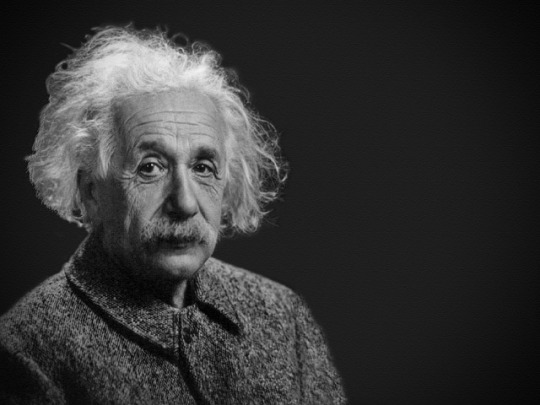
Albert Einstein is widely recognized as one of the most brilliant and influential scientists in history. Born in Ulm, Germany in 1879, Einstein is best known for his theory of relativity, which revolutionized our understanding of space and time, and his famous equation, E=mc^2, which demonstrates the relationship between mass and energy.
Einstein's life was marked by a series of significant achievements and contributions to the field of physics. He received his doctorate from the University of Zurich in 1905, and later published four groundbreaking papers that established him as a leading figure in the field. In 1915, he published his theory of general relativity, which explained the observed behavior of gravitational fields and led to the prediction of the phenomenon of black holes.
In addition to his work on relativity, Einstein made important contributions to the development of quantum theory, statistical mechanics, and the study of the nature of light. He was also a vocal advocate for world peace and civil rights, and his name has become synonymous with genius and innovation.
Despite his many accomplishments, Einstein was also known for his quirky personality and his love of music and science. He was a lifelong pacifist and a vocal critic of nuclear weapons, and he famously said, "I know not with what weapons World War III will be fought, but World War IV will be fought with sticks and stones."
Beside of his theories and inventions, Einstein was also a talented musician and played the violin. He was also known for his sense of humor and his love of puzzles and riddles.
Einstein received numerous awards and accolades throughout his career, including the Nobel Prize in Physics in 1921. He died in 1955, but his legacy lives on through his groundbreaking discoveries and his enduring influence on the field of physics.
Despite his fame and success, Einstein remained humble and dedicated to his work. He once said, "The most incomprehensible thing about the universe is that it is comprehensible." This curiosity and passion for understanding the world around us is what made Einstein one of the most important and influential figures in the history of science.
Read the full article
0 notes
Text
Main Architectural Styles: From Classical to Sustainable

The History and Influence of Major Architectural Styles: Classical, Gothic, Renaissance, and Beyond

Architectural styles refer to the visual and aesthetic design elements that are characteristic of a particular period or place in history. These styles have evolved over time, reflecting the changing values, beliefs, and tastes of the societies that created them. Here is the list of the most influential and enduring architectural styles...
Classical Architecture
Colosseum
Classical architecture is characterized by its symmetry, proportion, and use of columns and other ornamental details. It originated in ancient Greece and Rome, and has had a lasting influence on Western architecture. Examples of classical architecture can be found all over the world, including the Parthenon in Athens, the Pantheon in Rome, and the White House in Washington D.C.
Gothic Architecture

Notre Dame
Gothic architecture is known for its pointed arches, ribbed vaults, and tall spires. It originated in 12th-century Europe and was popular during the medieval period. Gothic architecture is often associated with cathedrals and churches, such as Notre Dame in Paris and Westminster Abbey in London.
Renaissance Architectur

Palazzo della Signoria
Renaissance architecture is marked by its revival of classical forms and its emphasis on symmetry, balance, and proportion. It originated in 15th-century Italy and spread throughout Europe during the Renaissance period. Examples of Renaissance architecture include the Palazzo della Signoria in Florence and the Brandenburg Gate in Berlin.
Baroque Architecture

Palace of Versailles
Baroque architecture is characterized by its elaborate, ornate design, which often includes dramatic curves, sculptures, and frescoes. It originated in 17th-century Italy and spread throughout Europe during the Baroque period. Examples of Baroque architecture include the Palace of Versailles in France and the Taj Mahal in India.
Neoclassical Architecture
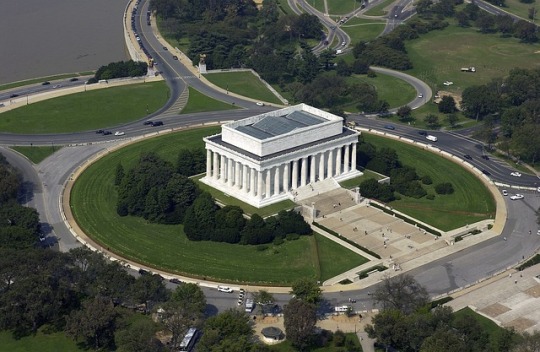
Lincoln Memorial
Neoclassical architecture is a revival of classical architecture that emerged in the 18th and 19th centuries. It is characterized by its symmetrical design and the use of columns, pediments, and other classical elements. Examples of Neoclassical architecture include the Lincoln Memorial in Washington D.C. and the British Museum in London.
Art Deco Architecture

Empire State Building
Art Deco architecture is characterized by its sleek, modernist design, which often includes geometric shapes, bold colors, and ornate details. It emerged in the 1920s and 1930s and was popular until the 1950s. Examples of Art Deco architecture include the Empire State Building in New York City and the Chapman Building in Los Angeles.
Modernist Architecture

Guggenheim Museum
Modernist architecture is characterized by its emphasis on functionality, simplicity, and the use of new materials and technologies. It emerged in the 20th century and is still popular today. Examples of Modernist architecture include the Guggenheim Museum in Bilbao and the Sydney Opera House.
Sustainable Architecture

Bullitt Center
Sustainable architecture is a form of architecture that seeks to minimize the environmental impact of buildings while maximizing their energy efficiency and long-term sustainability. Examples of sustainable architecture include the Bullitt Center in Seattle, which is designed to be completely self-sustaining, and the Eden Project in Cornwall, which features a series of geodesic domes that are powered by renewable energy sources.
In conclusion, architectural styles have evolved over time, reflecting the changing values and tastes of the societies that created them. From the classical forms of ancient Greece and Rome, to the sleek and modernist designs of the 20th century, architecture has played a vital role in shaping the built environment and the way we live.
Read the full article
0 notes
Text
The Future of Energy: Understanding Fusion Power

Fusion power is a type of energy generation that has the potential to revolutionize the way we produce electricity. It is based on the same process that powers the sun and other stars, and it has the potential to provide a virtually limitless and clean source of energy.
What is Fusion?
Fusion is a process in which atomic nuclei collide and merge to form a heavier nucleus. This process releases a large amount of energy, which can be harnessed and used to generate electricity. Fusion is the most powerful and efficient process known for producing energy, and it has the potential to provide a virtually limitless and clean source of power.
The Fusion Reaction
The most common type of fusion reaction used for energy production is called hydrogen-boron fusion. In this reaction, hydrogen atoms are fused to form a heavier element called boron. This process releases a large amount of energy, which can be harnessed and used to generate electricity.
There are several different approaches to achieving fusion reactions, including magnetic confinement, inertial confinement, and laser-induced fusion. Magnetic confinement involves using powerful magnetic fields to contain the hot plasma needed for the fusion reaction. Inertial confinement involves using high-energy lasers or other forms of radiation to compress and heat a small pellet of fuel, causing it to undergo fusion. Laser-induced fusion involves using a series of high-energy lasers to compress and heat a small pellet of fuel, causing it to undergo fusion.
Z Pinches and Other Fusion Alternatives
In addition to the approaches mentioned above, there are several other approaches to achieving fusion reactions. One promising approach is called Z pinches, which involves using a strong electric current to compress and heat a plasma, causing it to undergo fusion. There are also several other fusion alternatives being researched, including fusion-fission hybrids and plasma-based acceleration.
Overall, fusion power holds great promise as a clean and virtually limitless source of energy. While it is still in the early stages of development, researchers are making steady progress in understanding and harnessing this powerful and efficient process. As our understanding of fusion continues to grow, it may one day play a vital role in meeting our energy needs.
Read the full article
0 notes
Text
Chaos Theory 101: The Butterfly Effect in Action

The butterfly effect is a concept in chaos theory that refers to the idea that small, seemingly insignificant events can lead to significant and often unforeseen consequences. The term comes from a metaphor used by mathematician and meteorologist Edward Lorenz, who compared the flapping of a butterfly's wings to the potential for small events to have large effects on the future course of a weather system.
The butterfly effect suggests that even small actions or events can have far-reaching and complex impacts on a system. This can be seen in a variety of contexts, from the weather and climate to social and economic systems.
One example of the butterfly effect in action is the so-called "butterfly ballot" used in the 2000 presidential election in Palm Beach County, Florida. The ballot, which had the candidates' names arranged in columns rather than rows, was criticized for being confusing and potentially leading to mistakes by voters. Some argued that the ballot's design had significant consequences on the outcome of the election, potentially contributing to the narrow margin by which George W. Bush won the state and the presidency.
Another example of the butterfly effect can be seen in the financial markets. Small changes in the value of a single asset or a series of events can have ripple effects on other assets and markets, potentially leading to significant changes in prices and trends.
The butterfly effect can also be seen in the spread of ideas and information. A small group of people sharing an idea or message can lead to significant changes in attitudes and behaviors within a larger community. This can be seen in the way that social media and other online platforms have facilitated the rapid spread of information and the potential for it to influence public opinion and decision-making.
The concept of the butterfly effect highlights the complexity and interconnectedness of systems and the potential for small events to have significant impacts. It can be used to better understand and predict the potential consequences of actions and events, particularly in situations where the outcome is uncertain or there are multiple variables at play.
Read the full article
0 notes
Text
The Fascinating World of Volcanoes

Volcanoes are geological formations that occur when molten rock (magma) and ash spew out of an opening in the Earth's surface. These openings, called vents or fissures, can be found on the Earth's crust as well as on other planets and moons. Volcanoes form when magma from deep within the Earth rises up and collects in magma chambers near the Earth's surface. As the magma becomes more and more pressurized, it eventually erupts through the Earth's crust, creating a volcano.
Different Types of Volcanoes
There are several different types of volcanoes, including stratovolcanoes, shield volcanoes, and cinder cone volcanoes. Stratovolcanoes, also known as composite volcanoes, are typically tall and cone-shaped with steep slopes. They are formed by the eruption of thick, viscous lava and are often associated with explosive eruptions. Shield volcanoes, on the other hand, are much flatter and have gentle slopes. They are formed by the eruption of thin, fluid lava and tend to have less explosive eruptions. Cinder cone volcanoes are small, steep-sided cones that are formed by the eruption of ash and cinders.
The Largest Volcanoes on Earth
There are many active volcanoes around the world, with some of the most well-known being Mount St. Helens in the United States, Mount Vesuvius in Italy, and Mount Etna in Sicily. However, there are also many dormant or extinct volcanoes, which are no longer active and may not erupt again in the future. The biggest volcano in the world is believed to be Mauna Loa, a shield volcano located on the island of Hawaii. It is the largest volcano on Earth in terms of volume and area covered, and it has been active for at least 700,000 years.
Active and Dormant Volcanoes
There are several factors that can contribute to whether a volcano is active or not. One important factor is the amount of magma present in the magma chamber beneath the volcano. If there is enough magma present, the volcano may become active and erupt. Other factors that can affect a volcano's activity include the type of magma and the pressure in the magma chamber. Volcanoes that have erupted in the past are more likely to erupt again in the future, although there is no way to predict exactly when an eruption will occur.
Overall, volcanoes are fascinating geological formations that have shaped the Earth's landscape for millions of years. They are powerful and awe-inspiring, and they continue to play an important role in the Earth's geology and climate.
Read the full article
0 notes
Text
The biggest organ in the human body

The human body has a total of 78 organs. These organs are grouped into five major organ systems, including the nervous system, the circulatory system, the respiratory system, the digestive system, and the urinary system. Each of these systems is made up of a number of organs that work together to perform specific functions that are essential for maintaining the overall health and functioning of the body. Some of the most important organs in the human body include the heart, the lungs, the liver, the stomach, the kidneys, and the brain.
Skin, the biggest organ
The biggest organ in the human body is the skin. The skin is the body's largest organ, and it performs a number of important functions, including protecting the body from external threats, regulating body temperature, and maintaining hydration. The skin is also an important sensory organ, providing the body with the ability to feel sensations like touch, pain, heat, and cold. The skin covers an average area of about 1.5-2 square meters in adults, and it accounts for about 16% of the body's total weight.
The second biggest organ in the human body is the liver. The liver is located in the upper right part of the abdomen, and it performs a number of important functions, including filtering toxins from the blood, storing glycogen (a source of energy), and producing bile to help digest fats. The liver is an incredibly important organ, and it plays a key role in maintaining the overall health of the body. The liver is about the size of a football, and it weighs about 1.3-1.5 kilograms in an adult.
Pineal Gland, the smallest organ in the human body
The smallest organ in the human body is the pineal gland. The pineal gland is a small endocrine gland that is located in the brain, near the center of the head. It is about the size of a pea, and it weighs about 0.1 grams. The pineal gland produces melatonin, a hormone that helps regulate the body's sleep-wake cycle. It is an important organ, despite its small size.
Read the full article
0 notes
Text
What do we know about the solar system?
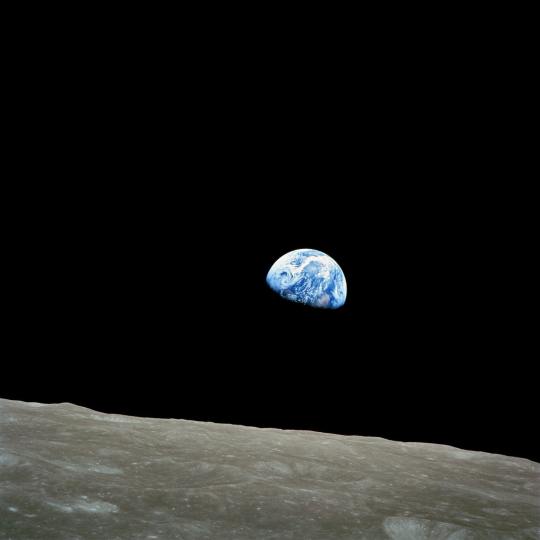
The Solar System is the collection of planets, moons, asteroids, comets, and other objects that orbit around the sun. It is located in the Milky Way galaxy and is thought to have formed around 4.6 billion years ago. The Solar System is made up of the sun and all the objects that orbit around it, including eight planets and their natural satellites; dwarf planets, such as Pluto and Eris; asteroids; comets; and other smaller objects. The planets in the Solar System are divided into two main categories: the inner planets, which are closer to the sun and include Mercury, Venus, Earth, and Mars, and the outer planets, which are farther from the sun and include Jupiter, Saturn, Uranus, and Neptune. The Solar System also contains a vast amount of empty space, with the average distance between planets being millions of miles.
The sun is the largest and most massive object in the Solar System and is the source of light and heat for all the planets. It is a giant, glowing ball of gas, mostly made up of hydrogen and helium, and is about 109 times the size of Earth. The planets are much smaller than the sun and are made up of different materials, such as rocks and metals. Each planet has its own unique characteristics and features, such as its size, composition, and atmosphere. For example, Earth is the only planet in the Solar System known to have liquid water on its surface, while Mars is known for its reddish hue and its rocky terrain.
The Solar System is constantly in motion, with the planets orbiting around the sun in elliptical paths. The planets also rotate on their axes, which causes them to have day and night. The motion of the planets and their moons can also have an effect on each other, causing tides and other gravitational effects. The Solar System is also constantly changing, as comets and asteroids collide with the planets and moons, and the sun's intense heat and radiation can affect the surfaces and atmospheres of the planets.
Overall, the Solar System is an incredible and fascinating place, filled with many mysteries and wonders. There is still much that we don't know about it, and many more missions and studies are planned to continue exploring and learning more about the Solar System and its many objects.
Are there other solar systems and suns in the universe?
It is widely believed that there are many other solar systems and suns in the universe. In fact, it is estimated that there are at least 100 billion solar systems in our own galaxy, the Milky Way, and there are billions of galaxies in the observable universe. The existence of other solar systems and suns has been inferred through a variety of observations, such as the detection of exoplanets – planets that orbit stars other than the sun – and the observation of other stars that are similar to the sun. The search for other solar systems and suns is an active area of research, and many more discoveries are expected in the future as technology continues to improve and our understanding of the universe grows.
Read the full article
0 notes
Text
The oldest language

Origins of languages
The exact origins of language are not well understood, and there are many theories about how languages emerged and evolved. Some theories suggest that language originated from animal communication, while others suggest that it emerged from the need for humans to communicate and cooperate with each other. Another theory suggests that language evolved as a way for humans to express and process complex emotions and thoughts. Whatever the exact origins of language may be, it is clear that it is an essential part of human society and culture, and it has played a crucial role in the development and evolution of human civilization.
The oldest known language
The oldest known language in the world is Sumerian, which was spoken in ancient Mesopotamia (modern-day Iraq) from around the 4th millennium BCE. Sumerian is an ancient language that was used for a wide variety of purposes, including religious texts, literature, and legal documents. It is a language that is rich in history and culture, and it has had a profound influence on the development of languages and writing systems in the region. Although Sumerian is no longer spoken today, it is still studied by linguists and historians, and it remains an important part of the cultural heritage of the region.
The oldest language that is still spoken
The oldest language that is still spoken today is Chinese. Chinese is an ancient language that has a long and rich history, and it is the oldest continuously used language in the world. It is believed that the earliest forms of Chinese date back to at least the 2nd millennium BCE, and the language has undergone many changes and developments over the centuries. Today, Chinese is spoken by more than 1.3 billion people, making it one of the most widely spoken languages in the world. It is the official language of China and Taiwan, and it is also spoken by large communities of Chinese speakers in many other countries around the world.
Read the full article
0 notes
Text
How to lower your electric bill

What uses the most electricity in a home?
The devices that typically consume the most electricity in a home are large appliances, such as refrigerators, ovens, washing machines, and dryers. These appliances are typically used for long periods of time, and they can use a significant amount of electricity. Other appliances that can consume a lot of electricity in a home include air conditioners, water heaters, and space heaters. Additionally, electronics, such as TVs, computers, and gaming consoles, can also consume a significant amount of electricity, especially if they are used for long periods of time.
Power Consumption of Typical Household Appliances
It is difficult to say exactly how many kilowatt-hours (kWh) a specific appliance or device will consume, as it can vary depending on a number of factors, such as the size and age of the appliance, the frequency of use, and the local climate. In general, however, the U.S. Department of Energy provides estimates of the average electricity usage for various appliances and devices. For example, the average refrigerator uses about 597 kWh per year, while the average washing machine uses about 175 kWh per year. You can use these estimates as a starting point to calculate the average electricity usage for your appliances and devices. Additionally, your utility company can provide you with information on your specific electricity usage, which can help you identify ways to save on your electric bill.
Ways to Lower Your Energy Bill
There are several ways you can decrease the amount of your electric bill. Some of the most effective ways to save on your electric bill include:
Use energy-efficient appliances: Using energy-efficient appliances can help you save on your electric bill by reducing the amount of energy you use. Look for appliances that have the Energy Star label, which indicates that they are energy-efficient.
Use LED light bulbs: LED light bulbs are more energy-efficient than traditional incandescent bulbs, and they can last up to 25 times longer. Switching to LED light bulbs can help you save on your electric bill, and they can also save you money on replacement costs.
Use a programmable thermostat: A programmable thermostat can help you save on your electric bill by allowing you to set a schedule for when your heating and cooling system turns on and off. This can help you reduce your energy usage when you're not at home, and it can also help you maintain a comfortable temperature in your home.
Install solar panels: If you have the option, installing solar panels on your home can help you generate your own electricity, which can reduce your reliance on the grid and save you money on your electric bill. Solar panels are a long-term investment, but they can save you money on your electric bill over time.
Use power strips: Power strips can help you save on your electric bill by allowing you
Read the full article
0 notes
Text
Who invented the internet

The internet was not invented by a single person, but rather it was the result of the work and contributions of many individuals and organizations over a period of several decades. The development of the internet can be traced back to the 1960s, when the U.S. military and other government agencies began to fund research into ways to improve the reliability and speed of computer networks.
One of the key developments in the early history of the internet was the creation of the ARPANET (Advanced Research Projects Agency Network), which was a network of computers that was developed by the U.S. Department of Defense in 1969. The ARPANET was one of the first networks to use packet-switching, which is a method of transmitting data over a network by dividing it into small packets that can be sent independently of each other. This allowed the ARPANET to transmit data quickly and reliably, and it paved the way for the development of other computer networks.
Over the next few decades, the internet continued to evolve and develop, and many other innovations and technologies were developed that helped to improve its speed, reliability, and capabilities. Some of the key developments in the history of the internet include the development of the World Wide Web in the 1990s, the creation of the first web browser, and the expansion of the internet to include mobile devices and other technologies. Today, the internet is a global network that connects millions of people and devices around the world, and it continues to evolve and change in response to new technologies and innovations.
Why internet is important in today's world?
The internet is important in today's world because it has revolutionized the way people communicate and access information. The internet has made it possible for people to connect with each other and share information and ideas quickly and easily, regardless of their location. It has also made it possible for people to access a vast amount of information and knowledge, and it has greatly expanded the range of resources and opportunities that are available to people around the world.
In addition to its role in communication and information access, the internet also plays a vital role in many other aspects of modern life. It is an important tool for businesses and organizations, as it allows them to reach a global market and connect with customers and partners around the world. The internet is also an important platform for the exchange of ideas and knowledge, and it has played a crucial role in facilitating the growth of the global economy and promoting innovation and progress.
Overall, the internet is an essential part of modern society, and it has had a profound impact on the way we live, work, and interact with one another. It continues to evolve and change, and it is likely to have even greater importance and relevance in the future
Read the full article
0 notes
Text
Oldest woman to give birth

The oldest woman to give birth is Rajo Devi Lohan, who gave birth to a daughter in November 2008 at the age of 70. Lohan, who is from India, was already postmenopausal when she gave birth, and she became pregnant through in vitro fertilization using donor eggs. Lohan's pregnancy and the birth of her daughter made headlines around the world, and they sparked a debate about the ethics of assisted reproduction in older women. Prior to Lohan, the oldest recorded woman to give birth was Rosanna Dalla Corte, who gave birth to a son in Italy in 1997 at the age of 59.
Rajo Devi Lohan's birth was not a normal birth. Lohan, who was 70 years old at the time of her birth, became pregnant through assisted reproductive technology, specifically in vitro fertilization (IVF) using donor eggs. In IVF, a woman's eggs are fertilized with sperm in a laboratory dish, and the resulting embryo is then implanted in the woman's uterus. This allows women who are no longer able to produce eggs or who have other fertility issues to become pregnant and give birth. Lohan's pregnancy and the birth of her daughter made headlines around the world, and they sparked a debate about the ethics of assisted reproduction in older women.
Read the full article
0 notes